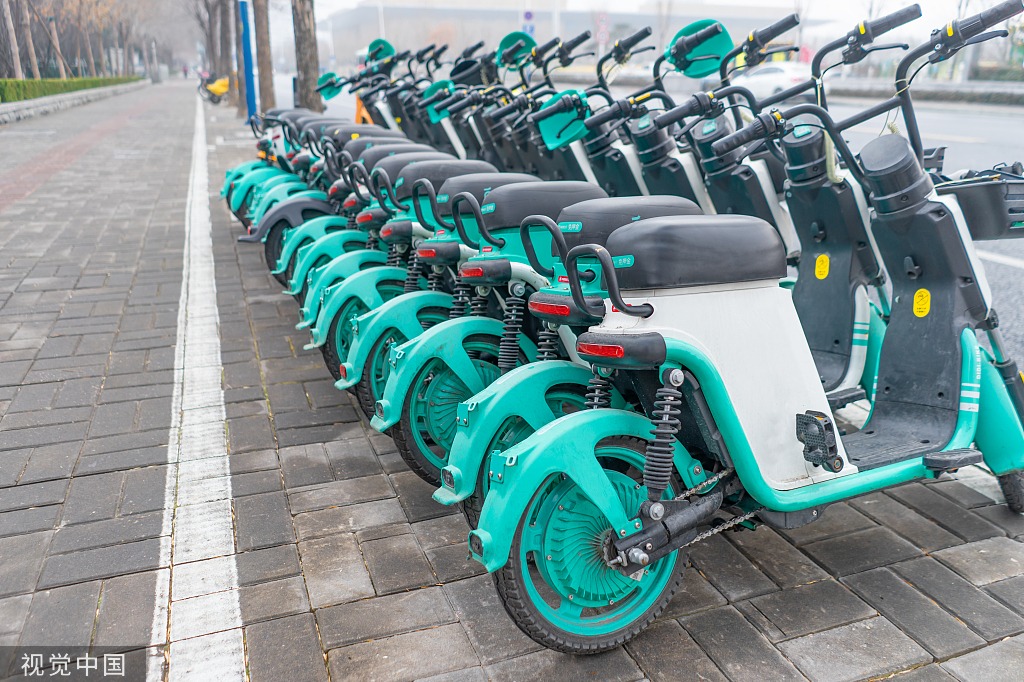Seven-decade history of peaceful rise
By Laurence Brahm | China Daily | Updated: 2019-08-31 09:01

Since the founding of New China on Oct 1, 1949, the China story has been one of meeting challenges with creative solutions. When new challenges emerge, they are overcome with even more creative solutions.
When New China was founded, probably the biggest challenge for the leadership was how to feed the people and address the immediate needs of the then largely agricultural society. The leadership inherited a nation that under the Qing Dynasty (1644-1911) had an agricultural socio-economic structure that was feudal.
Before 1949, land holdings were passed down through generations leading to small family plots, which were over-farmed and too small to be efficient. At that time, collective farming was the solution. It meant the aggregation of small plots allowing agriculture on a large scale.
Meeting the challenge of scaling up industry
In the 1950s, China faced the challenge of scaling up industry. Many factories were left behind by the foreign powers, and their nationalization allowed China to begin manufacturing on a large scale, employing more and more people, and providing them social services through the State-owned enterprises system, such as medical care, housing and retirement benefits.
The collectivization of agriculture and socialization of enterprises offered solutions to the problems at that time, but the leadership then would not have foreseen the consequences in the years to come. Collectivization meant everyone shared equally and there were no incentives. In the short term, key issues and needs were addressed. In the long run, however, both agriculture and industry became uncompetitive, because of the social welfare system and the lack of incentives. This problem too was addressed, albeit gradually, after reform and opening-up started in 1978.
In launching reform and opening-up, China did not adopt any Western model. Instead, it developed its own model based on its own conditions and cultural considerations that would eventually become known as a "socialist market economy with Chinese characteristics". The "China solution", which evolved combining the market and planning, can now be shared with other economies, but not forced upon any economy. The solution involves adopting a practical approach using the tools of both market and planning to achieve results.
Whenever unexpected challenges have emerged, China has used pragmatic and creative ways to address them, knowing well that change is constant and new approaches are needed to resolve new issues.
Shifting from economic sustenance to growth
From the 1950s to the 1960s, China collectivized agriculture and socialized industry to provide food and jobs for all. However, when these approaches were overtaken by competitive economies in the late 1970s and early 1980s, China opened up its economy, and introduced incentives in order to create a more competitive environment and shift from economic sustenance to economic growth.
A macro-managed economy evolved in the 1990s through the use of economic and financial tools of both market economy and planned economy, which sustained China's high-speed economic growth well into the first decade of this century, and helped it in upgrading its infrastructure. And to cool down the overheated economy, China adopted a new approach of rebalancing growth by deleveraging, and strengthening environmental protection and healthcare.
The State-owned enterprises did solve many problems in the 1950s, but by the 1980s many of them had become inefficient. As such, to realize the goals of "Four Modernizations" set in the 1970s and to attract more investments and technologies, deeper reforms were required in the 1980s and 1990s. Deeper reforms were also needed to redesign the social welfare system introduced in the 1950s.
The previous system of the State providing housing, healthcare and retirement benefits for all was re-organized for developing land for commercial housing and urban infrastructure to support the ever-increasing urban populations, and for promoting pension and health insurance, creating a new role for the financial sector to play.
As a result, China needed more lawyers, accountants, bankers, investment bankers, insurers, along with engineers and workers for the industrial and agricultural sectors. With this change arose a new social group-the middle-income group.
Belt and Road Initiative and multilateral finance
The China-proposed Belt and Road Initiative is rooted in the country's own domestic economic experience. In the 1980s and 1990s, China built expressways, railways, airports, communications networks and ports to achieve growth, because investment in infrastructure promotes economic growth for the benefit of all.
The Belt and Road Initiative is taking this model global, offering solutions to other countries facing the same challenges of development that China faced in the past. To push the initiative forward and meet the global needs, China helped establish multilateral financial institutions such as the Asian Infrastructure Investment Bank and the BRICS New Development Bank, just as it had set up the China Development Bank, Export-Import Bank of China and Agricultural Bank of China in the past to meet domestic needs.
Aware that reform and opening-up could lead to inflation and currency risks, China opened up its economy slowly without accepting the International Monetary Fund's "shock therapy" approach. The 1997 Asian financial crisis was a lesson in managing the risks associated with the rapid exposure of the economy to the outside world. China adopted a monetary policy to stabilize the currency in response to the Asian financial crisis. And the success of this approach prepared China to meet the challenges brought about by the 2008 global financial crisis. China called for the Chiang Mai Initiative, which ultimately led to the BRICS group calling for their own development bank and a responsible financial system.
Ecological civilization a unique concept
China's challenge in 1978 was to industrialize and bring in foreign investment, as it needed high economic growth to lift people out of poverty. But the rapid growth of the economy extracted a high cost: environmental damage. So the leadership called for rebalancing the economy and developing an ecological civilization, which would encompass people's health and well-being, water and food security, and environmental protection. Today, China leads the world in green energy, green technology and green finance.
When reform and opening-up were launched, people's education level was low and the country had to rely on low-end industrial manufacturing to attract foreign investments and increase exports. So China sought to improve its education system, focusing on science and technology. And once that happened, China's technologists and technicians started "going out" to build infrastructure facilities in not only developing economies, but also developed ones.
Many of the computer and technology programs in Silicon Valley are the outcrops of China's innovation. Now, China's focus is on the Guangdong-Hong Kong-Macao Greater Bay Area, which is fast becoming a global center for artificial intelligence, telecommunications equipment and even space technology.
Unilateralism vs multilateralism
China began exporting low-end products in the 1980s and 1990s to reduce its trade deficit, but it soon moved up the global industrial chain and accumulated trade surpluses against many economies. And China's entry into the World Trade Organization in 2001 gave it access to many global markets.
Post-2001, China's story has been no longer only about attracting foreign investment. It is also about Chinese companies "going global". China is no longer just the "factory of the world" but also the "investor of the world". The new face of China is represented by Chinese multinational companies as innovators and investors in high-tech industries.
China focuses on business diplomacy. It believes in working with governments, not interfering in other countries' internal affairs. It is prepared to shoulder more international responsibilities, but through the United Nations and other multilateral organizations, and unlike the US which is pursuing the "America first" policy, it is committed to building a community with a shared future for mankind.
The author is the founding director of the Himalayan Consensus and a senior international fellow at the Center for China and Globalization. The views don't necessarily represent those of China Daily.
























